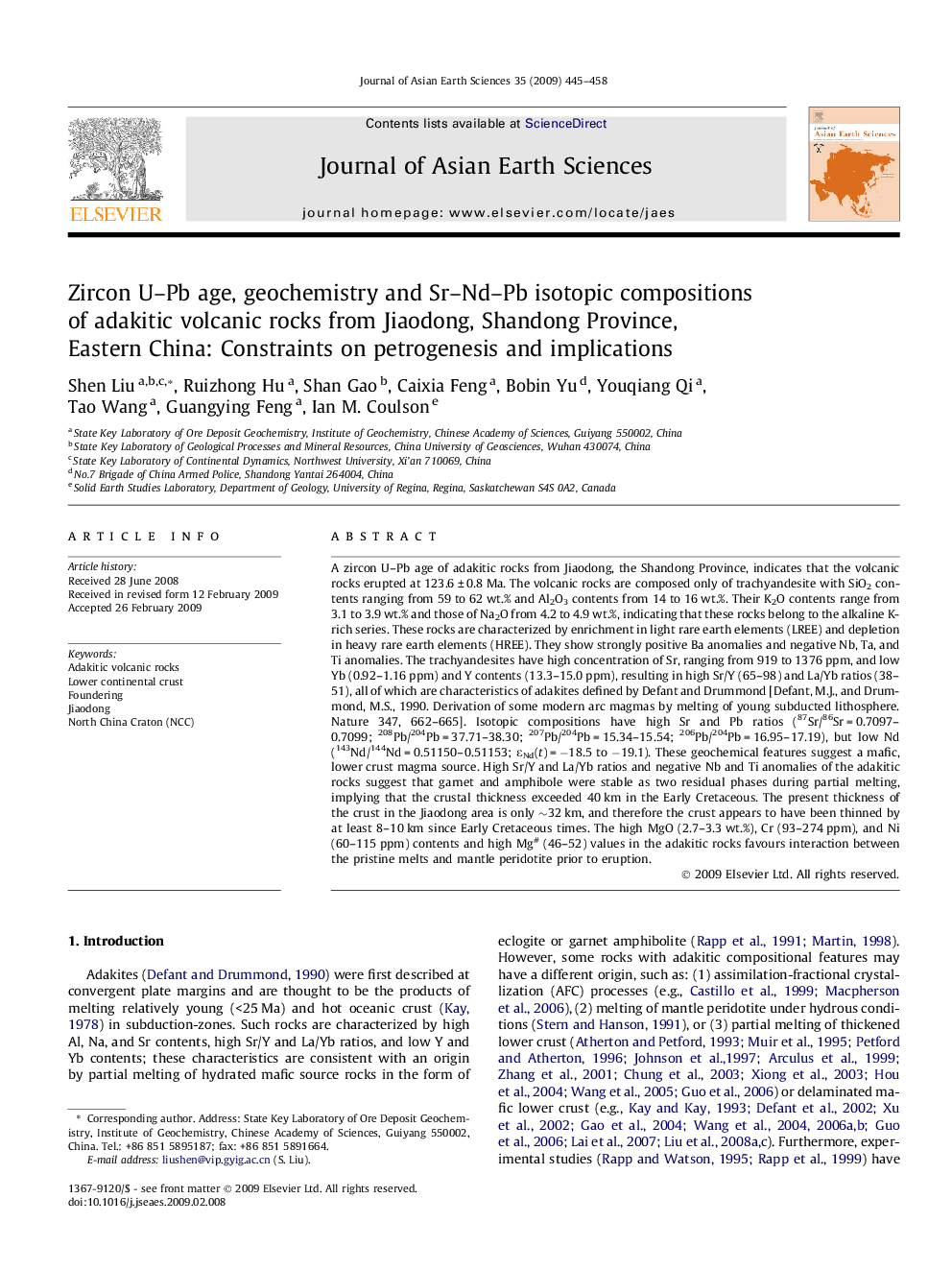| Article ID | Journal | Published Year | Pages | File Type |
|---|---|---|---|---|
| 4732126 | Journal of Asian Earth Sciences | 2009 | 14 Pages |
A zircon U–Pb age of adakitic rocks from Jiaodong, the Shandong Province, indicates that the volcanic rocks erupted at 123.6 ± 0.8 Ma. The volcanic rocks are composed only of trachyandesite with SiO2 contents ranging from 59 to 62 wt.% and Al2O3 contents from 14 to 16 wt.%. Their K2O contents range from 3.1 to 3.9 wt.% and those of Na2O from 4.2 to 4.9 wt.%, indicating that these rocks belong to the alkaline K-rich series. These rocks are characterized by enrichment in light rare earth elements (LREE) and depletion in heavy rare earth elements (HREE). They show strongly positive Ba anomalies and negative Nb, Ta, and Ti anomalies. The trachyandesites have high concentration of Sr, ranging from 919 to 1376 ppm, and low Yb (0.92–1.16 ppm) and Y contents (13.3–15.0 ppm), resulting in high Sr/Y (65–98) and La/Yb ratios (38–51), all of which are characteristics of adakites defined by Defant and Drummond [Defant, M.J., and Drummond, M.S., 1990. Derivation of some modern arc magmas by melting of young subducted lithosphere. Nature 347, 662–665]. Isotopic compositions have high Sr and Pb ratios (87Sr/86Sr = 0.7097–0.7099; 208Pb/204Pb = 37.71–38.30; 207Pb/204Pb = 15.34–15.54; 206Pb/204Pb = 16.95–17.19), but low Nd (143Nd/144Nd = 0.51150–0.51153; εNd(t) = −18.5 to −19.1). These geochemical features suggest a mafic, lower crust magma source. High Sr/Y and La/Yb ratios and negative Nb and Ti anomalies of the adakitic rocks suggest that garnet and amphibole were stable as two residual phases during partial melting, implying that the crustal thickness exceeded 40 km in the Early Cretaceous. The present thickness of the crust in the Jiaodong area is only ∼32 km, and therefore the crust appears to have been thinned by at least 8–10 km since Early Cretaceous times. The high MgO (2.7–3.3 wt.%), Cr (93–274 ppm), and Ni (60–115 ppm) contents and high Mg# (46–52) values in the adakitic rocks favours interaction between the pristine melts and mantle peridotite prior to eruption.
